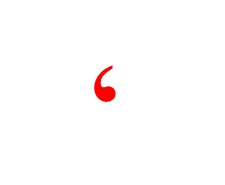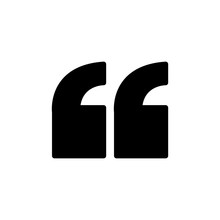 “We’re developing a situation where a whole group of young people is growing up having no real sense about how our system of justice works.” – Chief Justice John Roberts
“We’re developing a situation where a whole group of young people is growing up having no real sense about how our system of justice works.” – Chief Justice John Roberts
That line’s been quoted in several news sources and is included in a lot of Facebook rants about the Supreme Court’s performance of late. Without getting into what I think of the current Court, I do want to point out this showed up in someone’s latest rant. Before launching into why the poster thought Roberts was out of line, he stated even the grammar is wrong.
This is an editing blog. Did you think I was going to waste space on the undeserving crooks in Washington? Specifically, he said it should have been “a whole group of young people are…” instead of “is.” Actually, the poster is wrong. But you can’t fault him. The sentence looks wrong. It has “people” and “is” next to each other in the sentence. But “people” is not the operative word. “Group” is. And group, by definition, is a singular object. The members of a group are plural. And “people,” in most cases, is plural. But the subject of the clause is “group.” Therefore, the correct verb is… Well, is.
Bill Clinton must feel vindicated. (Google it. I remember that incident, and I’m still scratching my head.)
Roberts is, before anything else, a lawyer. I learned to edit from a lawyer, and believe me, it’s a great way to learn how to clean up your prose. However, the law has its own quirks and sticks to rules even corporate writing no longer recognizes. Like capitalizing every other noun in a sentence and not using contractions outside of quotations. I’ve had one editor flag that in my manuscript and stetted the hell out of it. But the bottom line is lawyers almost always get their grammar correct. So while it took me a decade to shed the legal habits of editing, the core of what I learned remains.
So why bring this up? Well, first, I needed a topic this week. And odd noun-verb pairings seemed obvious when I read the chief justice’s quote. Yes, they slip by sometimes when I edit. One could make a case for AI taking over the job, but having had some recent experience with ChatGPT for a project, make sure you stamp your passport for the frying pan on your way to the fire. AI is worse at it. Go Google “Hallucinations” and “AI.” Some of the results are hilarious.
But why is this so hard? Your brain sees “people” right next to the word “is” and goes, “That ain’t right.” But before “people” in the above quote is “group.” The group is growing up, but the people aren’t. “People” is only a descriptive noun telling the reader what group this is. So do I ever let this slide knowing the right way will hurt some people’s heads? Yes, actually.
A good editor can forgive a lot of rule-breaking in dialog and first-person. The person is talking, and I don’t give a damn what your English teacher told you (unless it was Mr. Murphy, whom I had in the 11th grade. He was cool!) People break rules speaking. They mismatch tenses. They swallow words and syllables. They use the wrong words. They even use the same word to start too many consecutive sentences. Your goal is to make it readable, not please Mrs. Chaucer (not her real name, but suck it, Clara.)
But once in a while, the right way is going to sound wrong. Leave that to third person narrative. (Send me second person, and I’ll print it out, shred it, and send back the shreds. I am not an avant-garde editor.)

 Thanks to clickbait and social media, use of the apostrophe (or “sky comma”) is a lost art. The most common (and often ridiculed) error is, of course, your/you’re. When you’re typing at a million miles an hour and want the words down, it’s easy to “hear” a word and pick the wrong spelling. For all the jokes about your/you’re, it’s something a ninth grader doing a proofread of your manuscript can spot. Assuming that ninth grader doesn’t believe texting should be the basis of grammar. Spoiler alert: It shouldn’t. k thx bye!
Thanks to clickbait and social media, use of the apostrophe (or “sky comma”) is a lost art. The most common (and often ridiculed) error is, of course, your/you’re. When you’re typing at a million miles an hour and want the words down, it’s easy to “hear” a word and pick the wrong spelling. For all the jokes about your/you’re, it’s something a ninth grader doing a proofread of your manuscript can spot. Assuming that ninth grader doesn’t believe texting should be the basis of grammar. Spoiler alert: It shouldn’t. k thx bye! arks, which is a challenge. Em dashes (or for the more pedantic, dialog dashes. Hate to burst your bubble, nitpickers, but the readers who pick up on this don’t care. Neither do I.) are generally used in Romance languages like Spanish, Italian, or French. I’m not sure why writers in English–any dialect of English–choose to do this, but then Cormac McCarthy dispensed with quotation punctuation altogether.
arks, which is a challenge. Em dashes (or for the more pedantic, dialog dashes. Hate to burst your bubble, nitpickers, but the readers who pick up on this don’t care. Neither do I.) are generally used in Romance languages like Spanish, Italian, or French. I’m not sure why writers in English–any dialect of English–choose to do this, but then Cormac McCarthy dispensed with quotation punctuation altogether.
